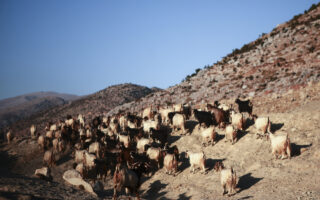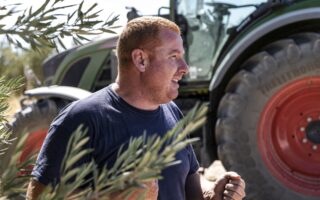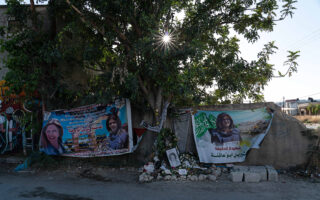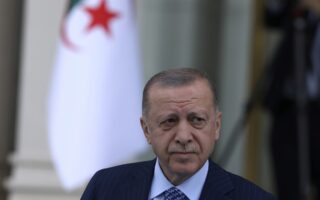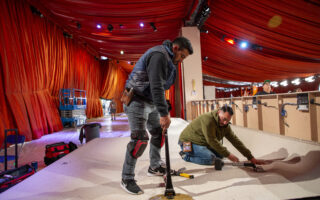A female Mossad agent’s treasure trove of photos
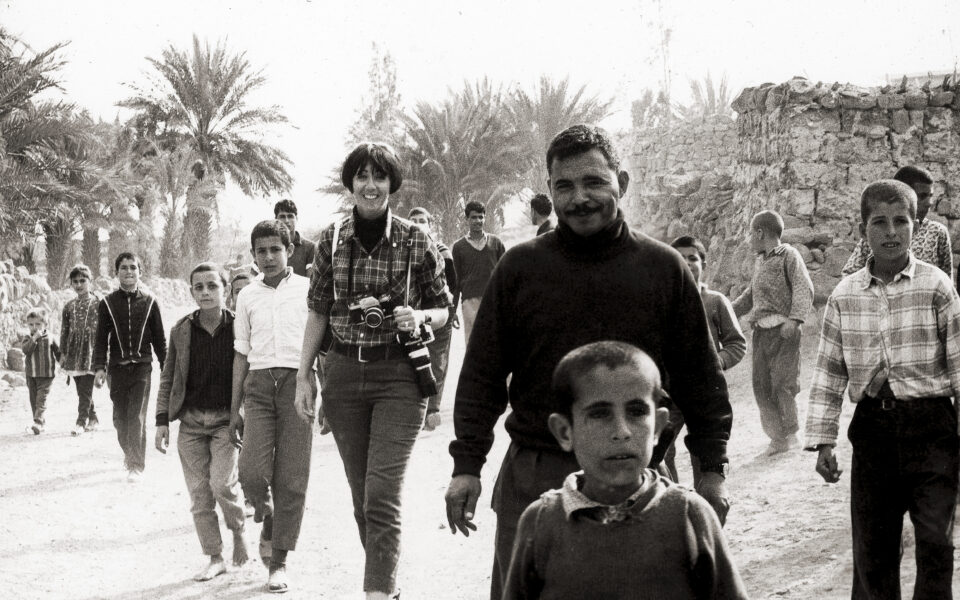
On Oct 8, 1965, the chief of Israel’s foreign intelligence service, the Mossad, presented the country’s prime minister with a plan to assassinate several leading Palestinian militants based in Beirut with letter bombs.
“It will be a woman doing it,” said the Mossad chief, Meir Amit, according to transcripts of the meeting with the prime minister, Levi Eshkol, seen by The New York Times. The agent would travel to Beirut and slip the bombs into a mailbox there, he said. At a later meeting, Amit told the prime minister that the woman was a Mossad agent using a Canadian passport who was working as a photographer for a French press agency.
The woman’s identity, Sylvia Rafael, and her face, later became known across the world when she was arrested as a member of a Mossad team that had planned to kill another top Palestinian militant in Norway but shot the wrong man.
Rafael and parts of her life story are widely known, but her work as a press photographer, documenting the unique access she attained in countries where foreigners were not usually welcomed, in secret training camps used by Palestinian militants, as well as to leaders of Arab states and Hollywood stars, had never been publicly revealed.
Until now.
On Tuesday, her work will be open to the public for the first time at the Yitzhak Rabin Center in Tel Aviv, Israel, after being kept for decades in a locked suitcase in the Mossad archive, in the heart of one of Israel’s most protected facilities. The suitcase contained hundreds of negatives and contacts from her years of work for Dalmas, a now defunct French news agency.
Rafael’s work as a photographer was just a cover for her espionage activity but the photographs she took, the curators of the exhibition say, show great talent.
The pictures open a window into the two lives of a woman, as a spy and a photographer. They include portraits of regional leaders like President Gamal Abdel Nasser of Egypt and his successor, Anwar Sadat, oblivious to the fact that they were being photographed by a Mossad agent.
Other images show scenes of flooding in Yemen and social unrest in Djibouti, as well as daily life in countries like Lebanon and Jordan, which would have been off limits for any Israelis, let alone a Mossad agent.
They also include pictures of Hollywood stars like Danny Kaye, Yul Brynner, Vanessa Redgrave and Eli Wallach.
“Sylvia was someone special,” said Moti Kfir, who was serving as the commander of Mossad’s Clandestine Operations Academy at the time Rafael was recruited and trained there. She had, he continued, “a remarkable talent for forming relationships with anyone, and to give her or him the feeling that they were her best friends.”
“Sylvia’s story fascinated me,” said Ilan Schwarz, one of the curators of the exhibition who was the first to look for the collection. “She was a woman who went against conventions at a very young age, left her comfort zone, and agreed to sacrifice so much.”
He added: “When I heard that she had been using the cover of a photographer in war zones in Africa and the Middle East, I believed that if we could locate those photographs, they might have great artistic value.”
Shortly after Rafael was arrested in 1973 in Norway, the Mossad acquired her photographs, Schwarz said. He joined forces with two London-based Israeli art collectors, Tamar Arnon and Eli Zagury, and together they approached the Mossad with a request to make the collection available.
“Not for a moment did I imagine that we would find such a level of photography and such a talent, until we opened the suitcase,” said Arnon, who curated the exhibit with Schwarz and Zagury.
The photographs document the assignments Rafael worked on from 1965 to 1971. Some of the photos are still classified top-secret by the Mossad and have been kept out of the exhibition.
Rafael, who died in 2005, appears in some of the photos. Kfir, the intelligence officer, said such self portraits were a common practice for intelligence agents trying to get pictures of locations or people without arousing suspicion.
Collections of works by deceased artists are often put on show by families, or people interested in profiting from their work, Arnon said. “Here, however, because of the secrecy and the sensitivity, this collection, which was created thanks to clandestine activity, had been forgotten until now,” she added.
Rafael was born in 1937 in South Africa to a Jewish father and a non-Jewish mother, meaning she was not a Jew under Jewish religious law. However, she developed a strong allegiance with the Jewish people, immigrated to Israel, and started working as a teacher.
She soon caught the eye of the Mossad, which was constantly on the lookout for potential agents who did not appear to be Israeli.
“One of the instructors at Mossad’s academy told us proudly about a new girlfriend of his who had a flatmate in Tel Aviv who could be of interest to us,” said Kfir.
That flatmate was Rafael, who was successfully recruited and underwent two years of tough training as an agent. “It was important for her to prove to us that she, who had not grown up in Israel, who was not Jewish, would be more successful,” he said. “And she was not scared of anything. There was no assignment that she expressed fear about or refused to carry out.”
During her training, which also included the use of cameras, the instructors noticed her talent.
“And then the idea of building a cover for her as a photographer began to sprout,” Kfir said. “It’s a perfect cover story because it gives the operative a journalist’s credentials and an excellent explanation of why she needs to enter countries for which it is very difficult to get a visa.”
Rafael went through an intensive course in photography with one of the leading press photographers in Israel. A Jewish European businessperson sent her portfolio with a warm recommendation to the Dalmas agency in Paris to accept the “rising talent” for work experience, according to Kfir.
“And this is how the cover-up story took shape,” Kfir said. “She lives in Paris, and from there she goes on missions in Djibouti or Jordan or Lebanon.”
Rafael managed to get up close to King Hussein of Jordan, who invited her to his home to photograph him and his family, including Prince Abdullah, the current king. The Mossad did not allow the publication of the photos from that trip, but did allow the publication of photos in which she documented Nasser and Sadat, proof of how close the Mossad came to the two Egyptian leaders, who feared for years that Israel would try to assassinate them.
Rafael was also the Mossad agent who penetrated training camps for Fatah, the movement founded by Yasser Arafat that later merged with the Palestine Liberation Organization, and which in 1965 began a campaign of attacks against Israel and Israeli citizens around the world. Top officials from the organization were the target of the letter bomb attack that the Mossad chief requested in 1965, but which was ultimately unsuccessful.
One of the pictures of her visit to the camp is on display in the exhibition in Tel Aviv. It shows “the burning look in the eyes of the boys who mobilized to Yasser Arafat’s call,” Schwarz said.
This article originally appeared in The New York Times.

